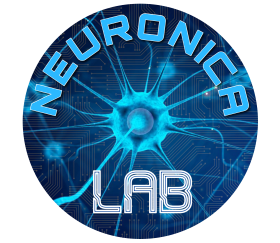Abstract Hyperscanning is a method thanks to which two or more subjects can mutually interact while their brains are simultaneously scanned by means of multiple, simultaneous EEG, allowing the study of the brain responses that determine important social interactions. The types of interactions that can be studied are diverse, ranging from competitive games, to cooperative tasks or musical performances. The objective of this thesis was to design and build a low-cost, open-source, wireless platform for multi-nodal time-synchronized EEG recording (hyperscanning): the time-synchronization has been achieved via the network clock from a WiFi network. The system is composed by different devices interconnected, both hardware and software. A Raspberry Pi 3 was used as “central computer” for data collection and transmission, data coming from a custom designed Raspberry Pi 3 shield board: this printed circuit board gives the possibility to connect and monitor up to 8 simultaneous EEG channels. Another peculiarity of the system is the usage of custom-made in ear-EEG electrodes from the Lab, which allowed more portability in exchange of a reduced signal amplitude and less monitored brain regions. Some of the tasks achieved were based on and inspired by open-source work available on the Web. The experience stretched from many fields such as HW/SW design for an embedded and biomedical system, allowing a personal growth in independently managing a whole digital system design project and related problems solving. Unfortunately, a malfunction in the ADC conversion made us obtain weak results preventing to achieve the goal to perform a hyper-scanning auditory evoked potential experiment with real EEG data streams. Anyway, simulated data could be perfectly sent via wireless for a real-time visualization on MATLAB, meaning that after refining the ADC behavior, reasonable performances could likely be reached. The whole project has been evaluated as feasible and worth the work on it, being a possible, valid starting point for future progressions on EEG hyper-scanning from a very solid level.
AUTHOR: Francesco Zippo
ADVISOR: Eros Gian Alessandro Pasero
DEGREE COURSE: Master’s Degree in Electronic Engineering
ACADEMIC YEAR: 2018/2019
